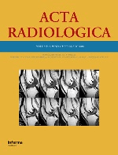
ACTA RADIOLOGICA
Scope & Guideline
Unveiling New Perspectives in Radiological Advancements
Introduction
Aims and Scopes
- Diagnostic Imaging Techniques:
The journal emphasizes research on various imaging modalities including MRI, CT, ultrasound, and PET, focusing on their diagnostic capabilities and advancements. - Clinical Applications of Imaging:
ACTA RADIOLOGICA covers studies that explore the clinical implications of imaging findings, aiming to enhance patient management and treatment outcomes. - Innovations in Imaging Technology:
The journal highlights innovative imaging techniques and technologies, including advancements in AI, machine learning, and image processing methods that improve diagnostic accuracy. - Multidisciplinary Approaches:
Research published in the journal often incorporates a multidisciplinary perspective, integrating insights from radiology, oncology, surgery, and pathology to enhance diagnostic and therapeutic strategies. - Radiomics and Predictive Modeling:
The journal features studies on radiomics, which involve extracting quantitative features from medical images to predict treatment responses, disease progression, and patient outcomes.
Trending and Emerging
- Artificial Intelligence and Machine Learning:
There is a growing emphasis on the application of AI and machine learning in radiology, particularly in image analysis, diagnostic accuracy, and workflow optimization. - Radiomics and Imaging Biomarkers:
Research on radiomics is trending, focusing on how quantitative imaging features can be used as biomarkers for predicting treatment responses and patient outcomes. - Interventional Radiology Techniques:
The journal is increasingly publishing studies related to interventional radiology, highlighting innovative techniques and their effectiveness in treating various conditions. - Patient-Centric Imaging Approaches:
Emerging studies focus on patient experiences, safety, and the psychological impact of imaging procedures, reflecting a broader awareness of patient-centered care. - Integration of Multimodal Imaging:
There is a trend towards combining different imaging modalities to enhance diagnostic accuracy and provide comprehensive assessments in complex clinical scenarios.
Declining or Waning
- Historical Perspectives on Radiology:
The publication of historical reviews and retrospective analyses has decreased, suggesting a shift towards more contemporary and practical applications of radiology. - Basic Science and Technical Details:
There is a noticeable reduction in articles that delve deeply into the basic science behind imaging techniques, as the focus moves towards clinical applications and outcomes. - Traditional Imaging Techniques:
Research focused solely on traditional imaging methods without integration of advanced technologies or innovations is becoming less common, as the field increasingly embraces new methodologies. - Case Reports and Small Series Studies:
The prevalence of case reports and studies with small sample sizes has diminished, likely due to a growing preference for larger, multicenter trials that provide more robust data.
Similar Journals
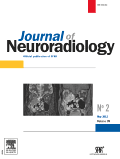
JOURNAL OF NEURORADIOLOGY
Innovating imaging for better neurological insights.JOURNAL OF NEURORADIOLOGY is a leading peer-reviewed journal dedicated to advancing the field of neuroradiology. Published by MASSON EDITEUR, and based in France, this journal serves as a vital resource for professionals and researchers focusing on clinical neurology and various imaging technologies. With an impressive impact factor reflective of its robust contribution to the literature—ranking in the Q2 quartile across categories such as Neurology (clinical), Radiological and Ultrasound Technology, and Radiology, Nuclear Medicine and Imaging—the journal is positioned prominently within its field. Researchers can access the journal through subscription options, providing valuable insights into the latest developments, techniques, and empirical studies that shape neuroradiological practices. With its inception dating back to 1974 and coverage extending to current advancements, JOURNAL OF NEURORADIOLOGY is crucial for fostering knowledge and innovation, making it indispensable for both seasoned experts and emerging scholars alike.
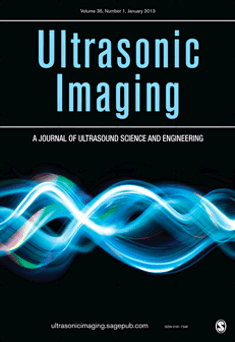
ULTRASONIC IMAGING
Exploring New Dimensions in Ultrasonic ResearchULTRASONIC IMAGING, published by SAGE PUBLICATIONS INC, is a leading journal within the fields of Radiology, Nuclear Medicine, and Imaging, with a particular focus on advancing the science and application of ultrasound technology. Since its inception in 1979, the journal has provided a platform for high-quality research, featuring innovative studies that bridge theoretical advancements and practical applications, making it an essential resource for researchers and professionals. With a notable impact factor reflecting its robust contribution to the medical community (2023: Q2 rankings in both Radiological and Ultrasound Technology and Radiology, Nuclear Medicine, and Imaging), ULTRASONIC IMAGING serves to disseminate pivotal developments in diagnostic imaging techniques, enhancing the understanding of ultrasound's role in patient care. Researchers are encouraged to explore this journal's collection of cutting-edge articles that push the boundaries of knowledge in ultrasound imaging and its implementation in clinical practices.

Radiology-Imaging Cancer
Transforming Cancer Diagnosis through Advanced Imaging.Radiology-Imaging Cancer is a prestigious journal published by the Radiological Society of North America (RSNA), focusing on the critical intersection of radiology, oncology, and advanced imaging techniques. This journal stands out in its field with a commendable ranking in the Q2 category for Medicine (miscellaneous) and Oncology, and an impressive Q1 ranking in Radiology, Nuclear Medicine and Imaging, according to the 2023 quartiles. With an ISSN of 2638-616X, it serves as an essential platform for the dissemination of research that contributes to the understanding and improvement of cancer diagnosis and treatment. Its comprehensive scope encompasses a range of topics, from innovative imaging modalities to clinical applications in oncology, making it a valuable resource for researchers, clinicians, and students interested in the evolving field of cancer imaging. Despite being published in the United States, the journal aims for a global reach, catering to a wide audience dedicated to advancing medical science.
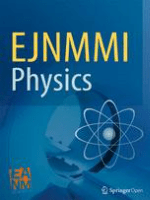
EJNMMI Physics
Pioneering Research in Radiology and Nuclear Medicine.EJNMMI Physics, the premier journal for advancements in nuclear medicine and imaging, is published by Springer in Switzerland and has been an open-access outlet since 2014, allowing for broad dissemination of critical research findings. With an ISSN of 2197-7364, the journal aims to bridge the gap between state-of-the-art physics and practical applications in biomedical engineering and radiology. Its impressive Q1 ranking in multiple categories, including Biomedical Engineering, Instrumentation, Radiation, and Radiology, Nuclear Medicine and Imaging, exemplifies its significant impact in the field. The journal boasts exceptional metrics with Scopus rankings placing it in the top echelons across disciplines, including a 6th position out of 58 in Radiation, and serves as an essential resource for researchers, professionals, and students who are eager to contribute to and stay informed about cutting-edge scientific advancements. With a broadening scope until 2024, EJNMMI Physics is an indispensable tool for those dedicated to pushing the boundaries of knowledge in medical physics and imaging technologies.

Egyptian Journal of Radiology and Nuclear Medicine
Unlocking the Future of Imaging and TherapyThe Egyptian Journal of Radiology and Nuclear Medicine, published by Springer, is a premier open access journal that has provided valuable insights and advancements in the fields of radiology and nuclear medicine since its initiation in 2010. With an E-ISSN of 2090-4762, this journal is dedicated to bridging the gap between research and clinical practice, allowing for the dissemination of high-quality research to a global audience. Situated in Germany, it enjoys a robust reputation in the academic community, evidenced by its categorization in the Q3 quartile for 2023, as well as its Scopus ranking, where it holds a position of #225 out of 333 in the domain of Radiology, Nuclear Medicine and Imaging, placing it in the 32nd percentile. The journal's open access model ensures that researchers, professionals, and students can freely access innovative studies, reviews, and case reports that discuss the latest methodologies, technological advancements, and clinical outcomes in radiology and nuclear medicine. As it looks toward its converged years spanning from 2010 to 2024, the Egyptian Journal of Radiology and Nuclear Medicine continues to be an essential resource for advancing knowledge and fostering ongoing collaboration in these critical fields.
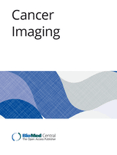
CANCER IMAGING
Exploring New Horizons in Cancer DiagnosticsCANCER IMAGING, published by BMC, stands as a leading open-access journal in the realms of oncology and medical imaging, significantly contributing to the advancement of cancer research since its inception in 2000. With an impressive impact across multiple domains—most notably ranking Q1 in prestigious categories such as Medicine (miscellaneous), Oncology, and Radiology—this journal ensures high visibility and influence within the academic community. As of 2023, it is recognized in various Scopus rankings, securing top positions in the fields of Radiology, Nuclear Medicine, and Imaging, alongside Radiological and Ultrasound Technology. The journal's commitment to open-access publication, adopted in 2014, enhances accessibility for researchers, healthcare professionals, and students alike, fostering an inclusive environment for sharing critical advancements and innovative methodologies in cancer imaging. Set in the vibrant landscape of the United Kingdom, CANCER IMAGING continues to play a vital role in elucidating the complexities of cancer diagnostics and treatment, establishing itself as an essential resource for those pursuing excellence in cancer care and research.

EUROPEAN JOURNAL OF RADIOLOGY
Elevating Standards in Radiology and ImagingThe European Journal of Radiology, published by Elsevier Ireland Ltd, is a premier peer-reviewed journal in the fields of radiology, nuclear medicine, and imaging. Established in 1981, it has carved a significant niche within the academic community, showcasing innovative research that enhances medical imaging practices and improves patient care. With an impressive ranking in the Q1 category for both Medicine (miscellaneous) and Radiology, Nuclear Medicine, and Imaging in 2023, the journal is recognized globally for its commitment to advancing scientific knowledge and improving imaging methodologies. The journal's Scopus ranking of #60/333, placing it in the 82nd percentile, underlines its reputation for high-quality research and scholarly contributions. While traditionally a subscription-based journal, it continually evolves to meet the demands of the academic landscape, aiming to bridge the gap between research and clinical practice. Researchers, healthcare professionals, and students alike can benefit from exploring its extensive archives and current publications, which are curated to foster education and innovation in the medical imaging domain.
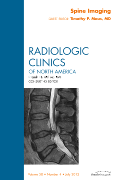
RADIOLOGIC CLINICS OF NORTH AMERICA
Illuminating the Path of Radiologic Excellence.Radiologic Clinics of North America, published by W B Saunders Co-Elsevier Inc, stands as a pivotal resource in the field of medical imaging and radiology. With a solid history dating back to 1963 and converging years extending to 2024, this journal has established itself as a reputable platform for original research, comprehensive reviews, and insightful discussions that advance the knowledge and practice of radiology, nuclear medicine, and imaging. Holding a Q2 classification in both the miscellaneous medicine and radiology categories and positioned within the 56th percentile among its peers, its contributions are vital for both academic research and clinical applications. Although it does not offer open access, the journal remains accessible through institutional subscriptions and is a must-read for researchers, healthcare professionals, and students keen on the latest developments in radiological practices. With a dedicated editorial board and a commitment to the highest academic standards, Radiologic Clinics of North America continues to shape the future of the medical imaging field.

Japanese Journal of Radiology
Pioneering Insights in Radiological PracticesThe Japanese Journal of Radiology, published by SPRINGER, serves as a premier platform for disseminating cutting-edge research and clinical advancements in the fields of radiology, nuclear medicine, and imaging. With an ISSN of 1867-1071 and E-ISSN 1867-108X, this journal has established itself as a vital resource for practitioners, researchers, and students alike. Renowned for its high-quality peer-reviewed articles, it currently enjoys a respectable impact factor within the Q2 category of Scopus rankings, placing it in the 69th percentile among 333 journals in its field. The journal has seen consistent convergence of research from 2009 to 2024, further underscoring its commitment to advancing the understanding of radiological practices. Importantly, the journal offers Open Access options to facilitate widespread dissemination of knowledge, ensuring that vital research reaches its audience without barriers. Addressed in Japan, the Japanese Journal of Radiology plays a critical role in enhancing the global discourse on medical imaging, making it an essential resource for anyone engaged in this dynamic field.

Imaging
Illuminating Innovations in Imaging TechniquesImaging, published by AKADEMIAI KIADO ZRT, is an esteemed open-access journal dedicated to the field of medical imaging, established in 2020. With an E-ISSN of 2732-0960 and based in Budapest, Hungary, this journal provides a vital platform for the dissemination of cutting-edge research and advancements in imaging techniques, especially in the realms of radiology, nuclear medicine, and ultrasound technology. While currently positioned in the Q4 category across multiple medical specialties, the journal continues to strive for improvements in visibility and impact, contributing to the evolving discourse in medical imaging. The journal aims to facilitate an inclusive and collaborative environment for researchers, professionals, and students, inviting them to share their findings and insights to enhance the field's development. With open-access availability since its inception, Imaging ensures free and easy access to its content, fostering a greater understanding and appreciation of innovative imaging practices worldwide.